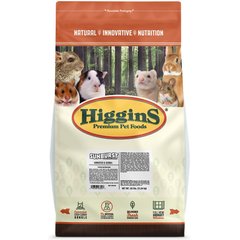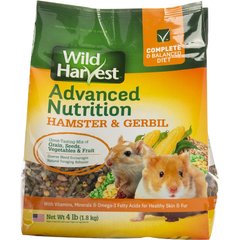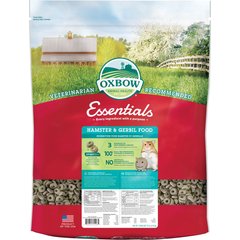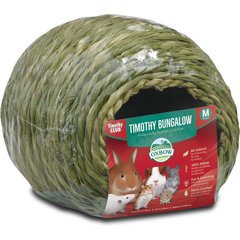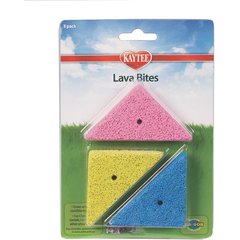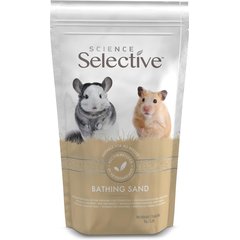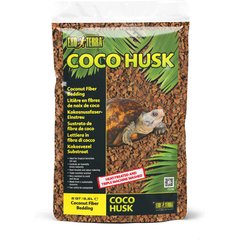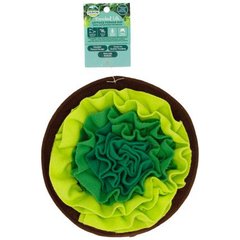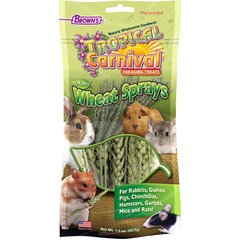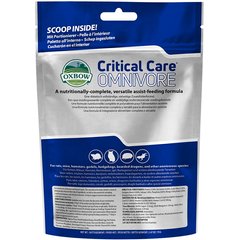How Long Do Hamsters Live?
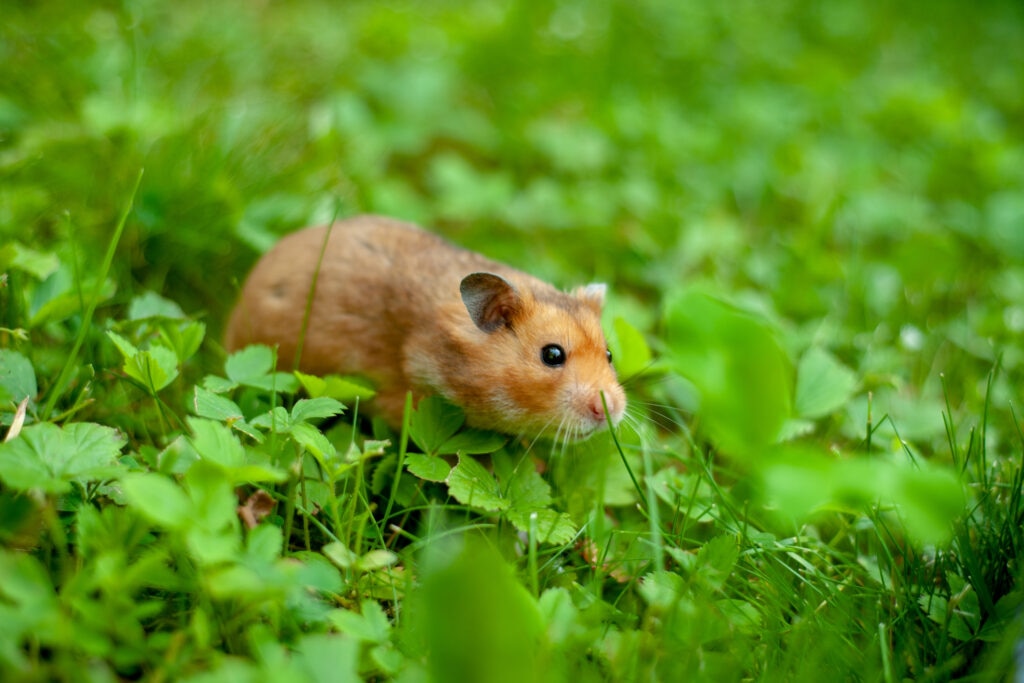
Photo by Olha Birieva/iStock/Getty Images Plus
If you’ve ever fallen for the charm of an adorable, puffy-cheeked hamster, you’ve probably wondered: How long do hamsters live?
A hamster’s life expectancy is relatively short, but these little furballs can still fill your home with a whole lot of love and joy.
In this guide, we’ll cover everything you need to know about hamster life expectancy and how to help your pint-sized pet live the longest, best life possible.
Average Lifespan of a Hamster
According to Susan Tyson, MS, VMD, DABVP (Avian), veterinarian and owner at Avian & Exotic Philly Vet Medical Surgical Clinic in Philadelphia, Pennsylvania, the average hamster lifespan is 2–3 years, though a hamster’s age expectancy varies by breed.
Here’s a look at the typical ranges by breed:
- Syrian or Golden hamster: 2–3 years
- Dwarf hamster: 1–3 years
- Teddy Bear hamster: 2–3 years
- Roborovski dwarf hamster: 2–3 years
- Winter White dwarf or Russian dwarf hamster: 1-3 years
- Chinese hamster: 1.5–3 years
That said, some hamsters beat the odds. The oldest known hamster reached 4.5 years of age.
What Affects a Hamster’s Lifespan?
Of course, breed is only one piece of the longevity puzzle. A hamster’s environment and the care they receive have a major impact on how long they live.
Here are some of the most important factors that influence a hamster’s lifespan:
- Genetics: Every hamster is born with their own genetic makeup, which can determine how resilient they are when it comes to illness or whether they’re predisposed to certain health conditions.
- Diet: A well-balanced diet helps hamsters maintain a healthy weight, strengthens the immune system, and lowers the risk of common health problems.
- Habitat: A roomy, well-maintained enclosure encourages natural behaviors and helps keep stress levels low, while cages that are too small or poorly maintained can increase the risk of illness.
- Stress levels: High stress can weaken the immune system and make hamsters more vulnerable to disease.
- Vet care: Regular vet visits can catch health issues early and support a longer, healthier life. Dr. Tyson suggests exams every 6–12 months for younger hamsters, and twice a year for hamsters over 1 year old.
Tips To Help Your Hamster Live Longer
While you can’t change your hamster’s genetics, you can play a big role in supporting their health and longevity through proper care. Here’s how to help your little companion enjoy a longer, healthier life.
Provide a Spacious Habitat
“All species of hamsters should be given as large a living space as possible without built-in levels or ladders,” says Carrie King, founder and operator of Home Sweet Hammy Home, a hamster rescue in Tucson, Arizona.
Small Angels Rescue further clarifies, recommending a 40-gallon (or larger), single-level glass aquarium with at least 600 square inches of horizontal floor space. Top the tank with a secure mesh-screen lid with clips to keep your hamster safely contained.
Recommended Products
This kind of setup gives your hamster the space to explore, exercise, and express natural behaviors, all of which can contribute to a longer, healthier life.
Offer a Balanced Diet
A domesticated hamster’s diet should be built around a high-quality commercial pellet that can be supplemented with formulated seed mix, such as Higgins Sunburst Gourmet Blend Hamster Food, Oxbow Essentials Healthy Handfuls Hamster Food, or Wild Harvest Advanced Nutrition Hamster Food.
Recommended Products
Cindy Cribbs, founder and operator of Haven for Hamsters Rescue & Sanctuary in Rio Rancho, New Mexico, says that in addition to a regular pellet, she supplements her hamsters’ diets with a small amount of cooked chicken or egg once a week, along with small portions of hamster-safe fruits and vegetables a few times a month.
While some hamsters may tolerate low-sugar veggies more frequently, Cribbs notes that it depends on the breed and the individual hamster’s health, so check with your veterinarian.
Hamsters should also always have access to clean, fresh water in a sipper bottle. Make sure to deep-clean the bottles weekly and spot-clean them daily.
Provide Enrichment
King says the base of a hamster’s tank should contain 10–12 inches of unscented paper–based bedding, which encourages natural burrowing behavior.
Recommended Product
Other enclosure enrichment options King recommends include:
- Wheel: Every hamster needs a properly sized exercise wheel. Hamsters can run about three to six miles per night!
- Hideaways: Options like the Oxbow Timothy Club Bungalow Small Animal Hideout or the Wild Harvest Edible Logz Natural Small Pet Hideaway provide cozy spaces to retreat.
Recommended Products
- Toys: Chew-friendly items, such as the Oxbow Apple Stick Bundle or the Kaytee Lava Bites Small Pet Toy, help keep teeth in check and prevent boredom.
Recommended Products
- Substrate containers: Fill small dishes with different textures, such as Science Selective Small Pet Bathing Sand, Exo Terra Coco Husk Reptile Substrate, or safe, pet-store moss. King notes these can be used for digging, rolling in (which regulates coat oils), and going to the bathroom.
Recommended Products
- Foraging opportunities: Scatter food mixes made of herbs, leaves, and dried flowers directly in the enclosure or over a forage mat to encourage foraging.
Recommended Product
- Sprays: Natural seed sprays, such as Brown’s Tropical Carnival Natural Wheat Sprays, are great for nibbling and foraging.
Recommended Product
King advises that you should never place hideouts or toys directly on top of paper bedding—hamsters may burrow underneath and cause items to topple. Instead, place them on sturdy platforms with legs that rest securely on the cage floor.
Provide Out-Of-Cage Time
Supervised out-of-cage time gives hamsters vital exercise and enrichment, helping prevent stress and obesity and keeping muscles and joints healthy.
Cribbs suggests setting up a secure, escape-proof area, such as a playpen with bar spaces ¼” apart for dwarf hamsters or ½” for larger hamsters like Syrian hamsters. A hamster-proofed room filled with safe toys is also a great option. Make sure to provide soft bedding like fleece, yoga mats, or paper-based bedding to keep their feet off hard surfaces in the play area. Aim for at least an hour of out-of-cage time daily.
Maintain a Regular Cleaning Schedule
Regular cage cleaning prevents a buildup of waste and uneaten food, which can quickly harbor harmful bacteria, mold, and parasites.
“We spot-clean their cages daily and deep-clean their cages weekly,” Cribbs says. She notes that some hamsters can become stressed during cleaning, but you can ease the transition by saving a bit of their old bedding and putting it back afterward. The familiar scent helps them feel secure and less like their entire home has suddenly changed.
Look Out for Early Signs of Illness
Keep an eye out for warning signs of illness. Catching problems early gives your hamster the best chance at successful treatment.
According to Dr. Tyson, common illnesses in hamsters, particularly seniors, include heart disease, arthritis, cancer, and dental disease. She says signs of illness to watch for that would warrant a veterinary visit include:
- Weight loss
- Difficulty eating
- Sleeping more than normal
- Lethargy
- Weakness
- Diarrhea
- Swelling of the face
- Swelling of the abdomen
- Difficulty walking
- Episodes of prolonged torpor
- Abnormal dentition (problems with the growth, alignment, or condition of their teeth)
- Decreased or lack of grooming, causing an unkempt appearance
Signs of Aging in Hamsters
While every hamster ages a little differently, Dr. Tyson says some common signs that may indicate your pet is entering their senior years include:
- Arthritis and joint stiffness, leading to slower or more awkward movements
- Muscle loss, especially in the back and pelvic muscles (often linked to arthritis or reduced activity)
- Cataracts or other vision changes
- Thinning or dull coat; other changes in fur quality
- Hearing decline
- Trouble climbing cage accessories or furniture they once managed easily
- Exercise intolerance, such as tiring quickly or spending less time on the wheel
As your hamster gets older, a few small adjustments can help keep them more comfortable:
- Simplify the cage: Use a single-level setup (if they don’t have one already) and make sure essentials (food, water, house, litter box) are easily accessible.
- Offer softer foods: If chewing is difficult, try giving them oatmeal, plain, unsweetened baby food, assisted feeding formulas, or other easy-to-eat options (with your vet’s guidance).
Recommended Product
- Keep them warm: Provide a cozy bed, such as Paw Inspired Furr-O Burrowing Small Pet Bed, and ensure a warm, draft-free environment.
Recommended Product
End of Life Care
If your hamster shows signs of pain or distress, consult a vet to discuss treatment options. When quality of life declines, euthanasia might be the most humane choice to prevent suffering.
If you have children, be honest with them when the time comes. Offer simple, age-appropriate explanations and give them space to express their feelings.
To help your hamster in their final days:
- Offer soft foods, such as scrambled egg, tofu, cooked oatmeal, pumpkin, or baby food.
- Assist with grooming by gently cleaning messy fur or hindquarters.
- Keep them warm with lots of soft bedding and protection from drafts.
- Maintain a calm, quiet environment to reduce stress.
- Give lots of love and gentle cuddles (if your hamster wants them).
The Bottom Line on Hamster Life Expectancy
Hamsters might not live as long as some other pets, but that doesn’t make their companionship any less meaningful. And with a healthy diet, plenty of enrichment, a clean, safe habitat, and routine vet visits, you can give your tiny friend the best life possible.
From food and bedding to toys, Chewy is here to support every stage of your hamster’s life.


